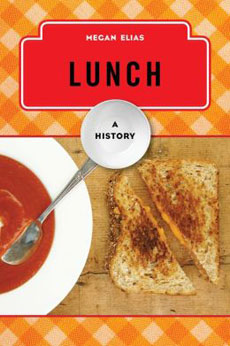"Because it offers such rich opportunities for the performance of culture, lunch is a meal in perpetual transition, so that any account of what is commonly eaten in any one place or time is likely to change within a generation. It is a distinctly provisional pastime to generalize about what lunch is likely to be around the world.
"The following wide-ranging tour of global lunches reveals variety within regions and also suggests that rural and urban lunches continue to vary significantly in character. Agricultural communities are less likely to break for lunch than are highly urbanized and industrialized societies, a difference that may seem counterintuitive. It would seem to make sense for those performing heavy farm labor to stop for refreshment while office workers expending few calories ought just to 'power through' from breakfast to dinner. This does not seem to be the case, however, particularly in the developing world, in which resources are allocated for meals at the beginnings and ends of days and nothing more than a snack — if that — intervenes in the middle of the workday.
"For those who take it, the two main categories of lunch globally appear to be hot and cold. In some places, such as the United States, lunch can be either hot or cold, but in others, lunch is always a hot or always a cold meal. To some extent, hot lunches are associated with more traditional societies, where lunch is ideally a meal eaten at home or in a convivial setting. Hot lunches also seem more popular in societies that allow for siestas, since they may have a soporific effect. Cold lunches are frequently small lunches, taken in parts of the world where the afternoon is seen as a time for work rather than relaxation. Lunch temperature, interestingly, does not seem to depend much on climate; Scandinavians favor cold sandwiches while Sub-Saharan Africans like soups and stews served with warm mush."
